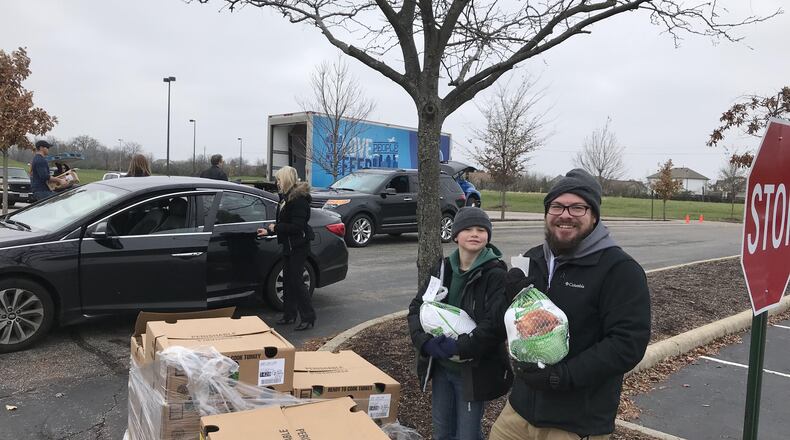READ MORE: Local restaurants that are open and serving on Thanksgiving Day
Of area cities, 34 percent of Dayton households are limited by their assets and income, according to a 2015 report from the United Way that estimates the percentage of local households below the poverty line and families that are on the bubble of being financially stable. Around 37 percent of West Carrolton households are considered limited by their assets, as are 36 percent of households in Trotwood, 34 percent of Springfield and 28 percent of Kettering.
To help families that are struggling to make ends meet this Thanksgiving, Bogg Ministries, located at Southbrook Church in Miami Twp., raised more than $17,500 to provide turkeys to give people last weekend. Though the majority of families who received a turkey live in the City of Dayton, many birds were delivered to area suburbs, including Beavercreek, Springboro, West Carrolton and Xenia, said Jason Johnston, co-founder of Bogg Ministries.
“There is need in every community,” Johnston said. “People lose a job, people get laid off, people get sick and life keeps going. They’re people looking for a little support.”
READ MORE: Friendsgiving events happening in Dayton
Hardship in the suburbs is often caused by jobs that don’t provide a livable wage, said Tracy Sibbing, vice president of community impact at the United Way of Greater Dayton. Unemployment remains low in the Miami Valley but it doesn’t “tell the full story,” she said.
“I would wager the bulk of these people are employed and covering basic needs but they are one major car repair or medical bill away from not being able to pay their rent every month,” Sibbing said. “They’re not making enough to have a viable savings.”
One person Sibbing knew of in such a situation was a woman who chose to live in Oakwood so that her children could attend the schools there. The woman was able to rent a place in Oakwood but, Sibbing said, she was basically living paycheck-to-paycheck in order to do so.
The number of people who fall into this category is “a bigger group than people realize,” and because of the wage gap, “it’s growing,” Sibbing said. Though Oakwood is considered one of Dayton’s wealthier suburbs, 14 percent of households there are still considered limited by their assets and income, according to the United Way’s report.
“You’ve got families that are working but they’re not earning self-sustaining wages. They’re not earning livable wages to meet their basic needs,” Sibbing said. “That’s really the story of those families.”
Hardship in the Dayton area
Percentage of households in area cities considered limited or challenged by their assets and income.
West Carrollton: 37 percent
Hamilton: 36 percent
Trotwood: 36 percent
Dayton: 34 percent
Springfield: 34 percent
Xenia: 29 percent
Kettering: 28 percent
Vandalia: 28 percent
Beavercreek: 15 percent
Oakwood: 14 percent
Source: 2015 United Way report.
About the Author
